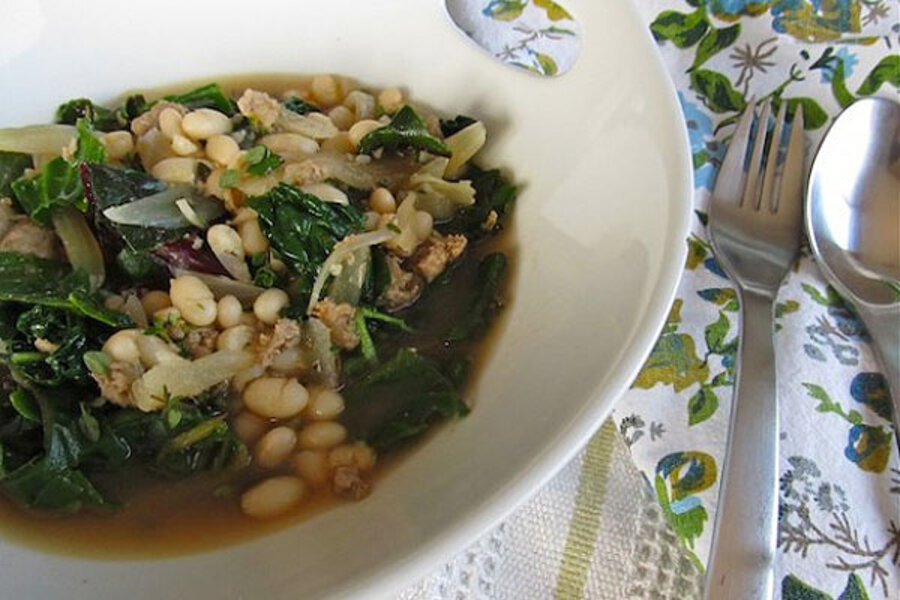By France Morissette and Joshua Sprague, Beyond the Peel
Don't let this simple stew recipe fool you, the result is more than the sum of its parts. The key is using a high quality Italian sausage, the spices are crucial for a great flavor.
2 onions, sliced
3 garlic cloves minced
4 sausages (hot or mild Italian), about 1 pound, turkey or pork
3 cups cooked white beans
3 cups chicken stock
1 tablespoon chopped fresh thyme
1 bunch of Swiss chard or kale (spinach works, too)
Salt and pepper to taste
Fresh thyme to garnish
1. In a large skillet, over medium high heat, sauté onions with olive oil for 3 minutes or until tender. Meanwhile slice the sausages into 1/2-inch pieces. Add the garlic and the sausage meat to the pan and cook until the sausage meat is almost cooked through. Reduce the heat to medium. Add the beans, stock and thyme. Cook for 15 minutes.
2. Using the back of a spoon or a potato masher, mash some of the white beans (leave some whole) to thicken the stock. Season with salt and pepper to taste. This will depend on the stock you used and the flavor of the sausage. Clean the chard and chop into 1 inch strips (if you’re using kale, remove the tough spine). Add the chard to the pot and cook until wilted (about two to five minutes). Serve as is, or with crusty bread, a poached egg or a dollop of sour cream.
My favorite supper for breakfast: Serve over a crusty toast with a poached egg on top. Adding only enough liquid to the bowl to soften the bread.
Read the full post on Stir It Up!






